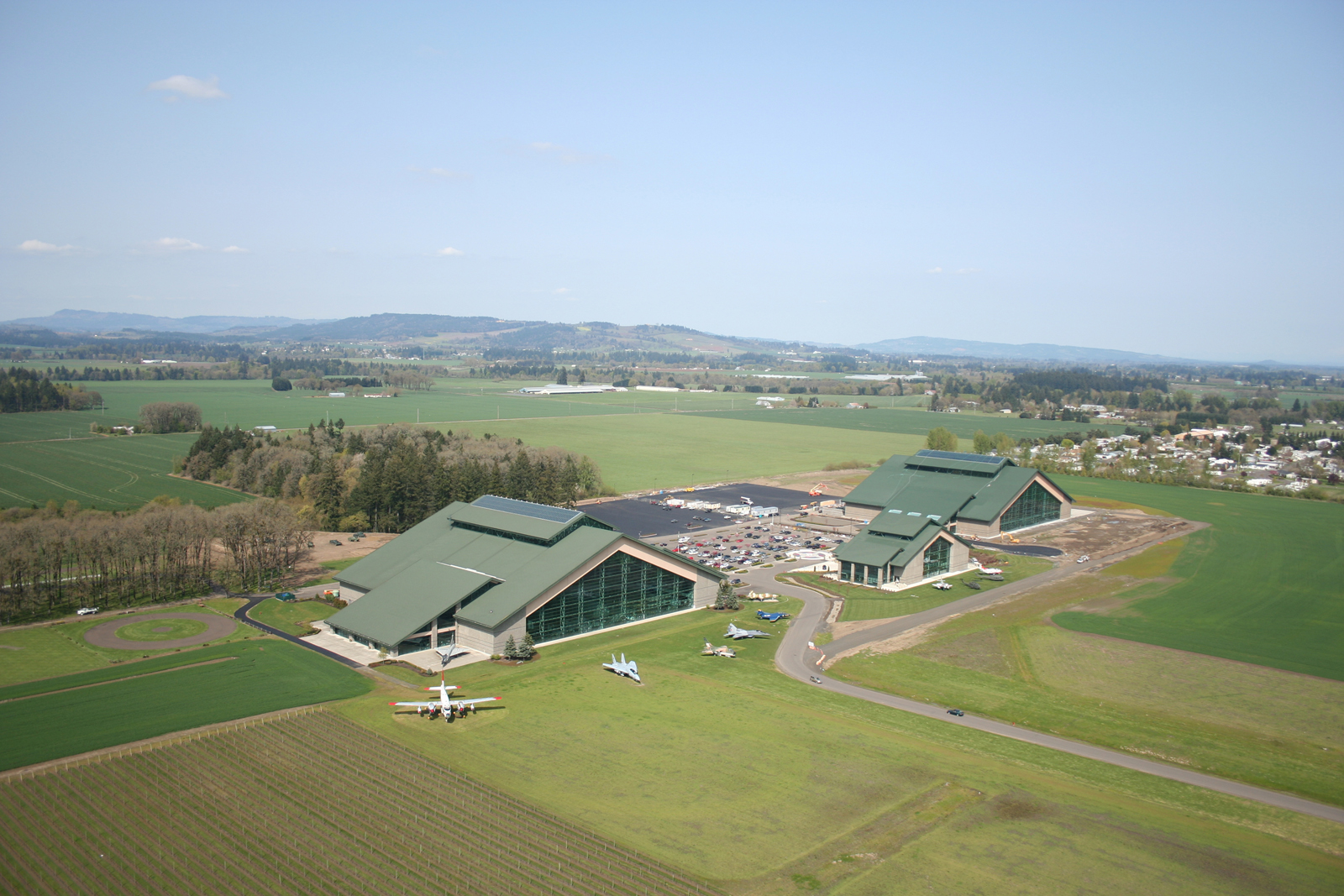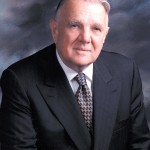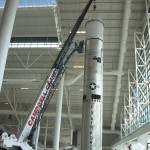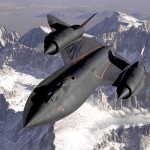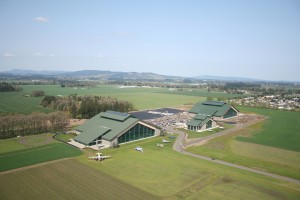
The expanded Evergreen & Space Museum campus in McMinnville, Ore., features a world-class aviation museum, IMAX 3D theater and a space museum with a 112-foot Titan II missile.
By Terry Stephens
Oregon’s famed Evergreen Aviation & Space Museum at McMinnville is used to doing things in a big way since it opened in 2001. Its largest aircraft exhibit is billionaire aviator Howard Hughes’ famous eight-engine Spruce Goose, the world’s largest wooden aircraft, which made only a single flight. Among dozens of other aircraft, many displayed under its wings, is the much smaller 1928 Ford Tri-Motor dubbed the Tin Goose.
In March 2007, the museum added an IMAX 3-D theater with a six-story screen. Offering a variety of IMAX films, the theater’s latest is a three-dimensional experience aboard a space shuttle visiting the International Space Station. Wearing high-tech glasses, viewers are immersed in a virtual world of space travel.
Produced by Lockheed Martin and NASA, “Space Station 3D” presents the story of the building of an orbiting laboratory—supported by 16 nations—to further human space exploration. Actor Tom Cruise narrates the film, which includes scenes taken 220 miles above the Earth by space explorers from the United States and Russia. For the first time, audiences will share views from space that only astronauts and cosmonauts have been privileged to experience.
“With the addition of our new space exhibit wing, Evergreen is the biggest air and space museum west of the Mississippi River,” said Nicole Wahlberg, director of marketing and public relations for the 7-year-old museum. “We’ve been regularly attracting 300,000 people a year, but with the addition of the new space exhibit, we’re expecting to see 500,000 visitors a year.”

The biggest exhibit, at a museum known for large aircraft and space missiles, is Howard Hughes’ famous wooden floatplane, the eight-engine Spruce Goose.
Two identical 120,000-square-foot buildings face each other on the expanded site, housing a collection of 150 world-class exhibits of aircraft and spacecraft, plus hundreds of artifacts. A major attraction at the new space wing is the historic, 114-foot Titan II missile, displayed in a 30-foot pit. Halfway down is a fully equipped launch control center. Visitors have an opportunity to experience a simulated Titan II launch.
First built in the 1960s by the Martin Co., liquid-fueled Titan missiles launched Mercury and Gemini space vehicles from Cape Canaveral, Fla., for astronauts’ first earth-orbiting space flights. In the Cold War years of the ’60s and ’70s, Titan II intercontinental ballistic missiles, armed with nuclear warheads, were based at 140 sites throughout the U.S., as a deterrent to a Soviet nuclear missile attack.
From 1989 until 2003, Titan IIs, like the one exhibited at the space museum, were used as space launch vehicles at Vandenberg Air Force Base, Lompoc, Calif., to place military and commercial satellites into orbit. The museum’s missile is on loan from the National Museum of the United States Air Force.
The space museum also provides a look at such exhibits as the 32,000-pound Willamette meteorite discovered in Oregon, a Russian Photon space capsule and replicas of the lunar module and lunar rover that carried men to the moon and over its surface. In a 65,000-square-foot gallery are dozens of space artifacts, many in the museum’s permanent collection and others loaned by the National Air and Space Museum and the Kansas Cosmosphere and Space Center.
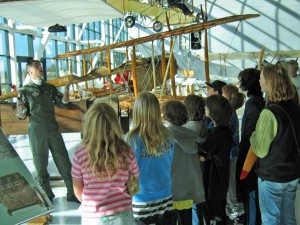
Students visiting the museum get lessons about aviation, from the Wright brothers’ first flight to the age of space exploration.
Among them are an X-15 rocket plane, Redstone rocket, Gemini astronaut capsule for early two-man Earth orbiting and Apollo three-crewman capsule that was part of the journey to the moon. A collection of spacesuits, space food and full-scale replicas of other spacecraft tell the story of space flight and exploration. Interactive exhibits and simulators make up another major part of the space wing’s displays.
The museum’s dedication to educational opportunities includes plans for a series of space camps and other programs. In September, the new facility also will become the home of McMinnville High School’s new Engineering and Science Academy, providing local students with half-day sessions in labs and classes in the museum’s education facilities.
Even with the attraction of the new space museum, the original aviation wing will lose none of its fascination for visitors who arrive in increasing numbers to see historical aircraft, including the famous Spruce Goose. Designed by Howard Hughes in 1946 as a cargo and troop carrier with a 320-foot wingspan, it flew more than 60 years ago, on Nov. 2, 1947.
Other aircraft on display include the SR-71 Blackbird, the world’s fastest and highest-flying spy plane. Eighty other historic aircraft include a Grumman F6F-3 Hellcat, B-17 Flying Fortress, F4U Corsair, P-38 Lightning, Bf-109 Messerschmitt, TBM Avenger, P-40 Warhawk and a replica of the Wright Flyer, the first aircraft to successfully achieve powered flight.

The expanded Evergreen & Space Museum campus in McMinnville, Ore., features a world-class aviation museum, IMAX 3D theater and a space museum featuring a 112-foot Titan II missile.
Visitors can explore the interior of the B-17 and stand on the giant cargo deck of the Spruce Goose. Docents throughout the museum share their personal stories with visitors about the aircraft on display.
The aviation museum also offers food at the Spruce Goose Café and memorabilia at the Rotors, Wings & Things store. A playground designed with aviation and space themes is a major attraction for children visiting the museum.
The Evergreen Aviation & Space Museum began with the vision of Capt. Michael King Smith, an F-15 pilot for the 123rd Fighter Squadron of the Oregon Air National Guard. A graduate of McMinnville High School, he also became president of Evergreen Ventures Inc. and Evergreen Air Venture Museum. He and his father, Delford Smith, shared the same enthusiasm for creating an aviation museum in McMinnville, and together they began collecting historic aircraft.
After the younger Smith died at 30, in an auto crash in 1995, his father continued to build their dream of an aviation museum. The elder Smith, founder and operator of the decades-old Evergreen International Aviation Inc., at the McMinnville Municipal Airport (MMV), is chairman of the Evergreen Aviation & Space Museum board of directors.
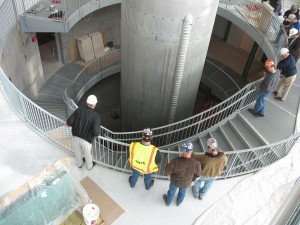
The museum’s newest major attraction for its space museum is a 112-foot Titan II SLV missile, once operational at Vandenberg Air Force Base in California.
His EIA business flies a fleet of Boeing 747 freighters to more than 100 sites worldwide, which are operated by 4,500 employees. A related company, Evergreen Helicopters, is the world’s most diversified rotary-wing operator, serving the agriculture, construction, forestry, health, petroleum and utility industries.
Smith’s efforts focus on inspiring and educating new generations, promoting and preserving aviation and space history and honoring military veterans’ patriotic service to their country.
Today, a McDonnell Douglas F-15A Eagle memorial near the museum pays tribute to his son’s military service and love of aviation, as well as to the memory of Maj. Rhory Roger Draeger, who died in the same accident. Evergreen crews and members of the Oregon National Guard raised the aircraft to its pedestal.
Located an hour’s drive south of Portland and five miles south of McMinnville, the museum has easy highway access. For visiting pilots, the giant museum is located less than a mile from the city’s airport, where free shuttle service is available.
For more information about the Evergreen Aviation and Space Museum, visit [http://www.evergreenmuseum.org].
- The Evergreen Aviation & Space Museum exists primarily due to one man, Delford Smith, founder and operator of Evergreen International Aviation at the McMinnville Municipal Airport.
- The museum’s missile display shows the Titan II resting in a 30-foot pit, representing its storage silo. The exhibit includes a simulated launch center, with control consoles from Vandenberg AFB in California.
- Among the many aircraft in the museum’s displays is a Lockheed SR-91 spy plane, used for high-speed, high-altitude reconnaissance missions.
- A Russian Photon capsule hangs in the new Evergreen Aviation & Space Museum’s wing of out-of-this-world exhibits.











